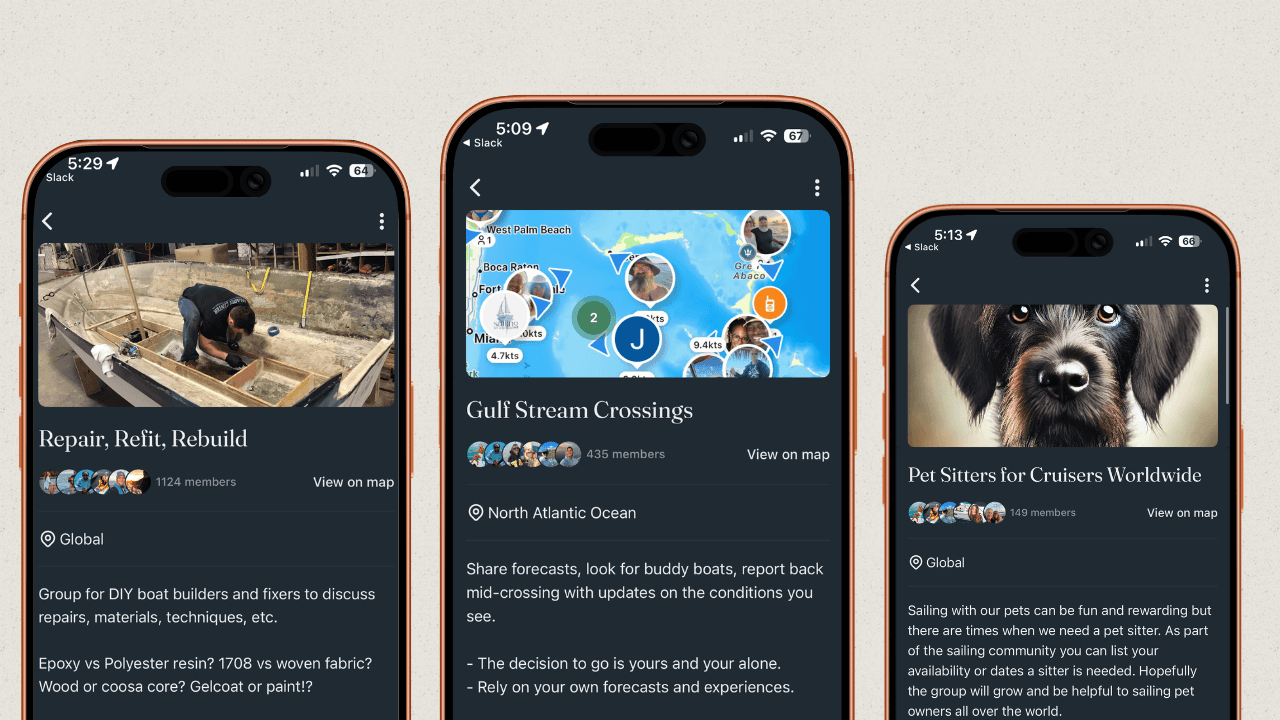🚨 Real-Time From the Water: SeaPeople Boaters Respond to Tsunami Warnings Across the Pacific
Community
Jul 30, 2025

SeaPeople users around the globe sound early alarms and share real-time updates
An undersea earthquake measuring 8.7 magnitude struck off the eastern coast of Russia’s Kamchatka Peninsula on Monday, triggering tsunami alerts across vast stretches of the Pacific. From Hawaii to California to Washington, SeaPeople users began sounding the alarm—not from newsrooms, but from the water.
This community of boaters jumped into action, sharing their experiences, warnings, and advice in real time. We’ve pulled together firsthand accounts, key safety takeaways, and what you should know if you’re ever faced with a tsunami alert while on board.
From Kamchatka to the California Coast: What Happened
On July 29, a powerful 8.7 magnitude earthquake rocked the seafloor near Russia’s Kamchatka Peninsula. Initial tsunami warnings were issued for parts of Japan, Alaska, Hawaii, and the U.S. West Coast.
According to the Washington Post, Japan issued evacuation orders for some coastal communities, and Hawaii was placed under a tsunami watch, later downgraded. In the U.S., NOAA issued alerts for potential tsunami activity, with impacts expected on the Pacific coastline stretching from Alaska to California【source: WaPo, NBC News】.
“Sitting at Anchor…”: SeaPeople Voices from the Coast
As alerts began rolling out, SeaPeople users were already reporting on-the-ground conditions and taking action.
“TSUNAMI WARNING. Sitting at anchor and just picked up a tsunami ⚠️ warning. In all likelihood we’re safer here than our home marina. 🤞”
— Robert Larson, Marin County, CA
Further north, William Houck in Seattle was quick to raise awareness:
“Tsunami watch after 8.7 earthquake off of Kamchatka! Just wanted to make sure there was some awareness.”
— William Houck, Seattle, WA
These posts helped inform and alert others—even before some official emergency notifications reached the public.
Monterey Bay Escape: One User’s Tsunami Dash
In Monterey, CA, Alyssa Roush-Tatum made a quick decision to head out during the alert. Her post gives a glimpse into the chaos:
“That. Sucked. For the dogs. For the humans. But we’re all safe. The boat is safe… Thank you so much to S/V Savannah for letting us know when it was safe to come home… Jollydogs owes you a sundowner or three.”
Her 9.4 nm run was as much about community as it was about safety. The SeaPeople platform helped connect cruisers and relay critical information in real time.
From Maui to Monterey: A Pacific-Wide Wake-Up Call
“Aloha. Hope all are ok. Hope to get some shut eye soon as all the warnings ruined my sleep… Glad not much damage from tsunami here on Maui.”
— Liz Grace Shaw, Kihei, HI
Even after the all-clear, many in Hawaii are still catching up on sleep and sorting through nerves. Across the Pacific, this event reminded everyone that the water connects us—and that a deep-sea earthquake anywhere can ripple everywhere.
When the Alarms Sound: Should You Head Offshore?
The short answer? It depends.
Boaters often debate whether heading offshore is safer than staying at the dock. Experts say it depends on how much time you have, the size of the wave, and your preparedness.
Here are key guidelines:
Only consider leaving the harbor if you are confident you can reach at least 30 fathoms (180 feet) of depth before the wave arrives.
Check the weather conditions—storms can be just as dangerous as the wave itself.
Talk to your Harbor Master before making a move. In many California harbors, staying docked may be safer for moderate tsunami events.
If you’re trailering your boat, expect heavily congested ramps and long delays.
Lessons from the Past: Preparedness Isn’t Optional
During the 2011 tsunami, some boaters in California rushed to sea unprepared—without enough food, fuel, or knowledge of how long they’d need to stay offshore. This led to dangerous re-entries during active tsunami surges.
If you’re considering heading out in an emergency, make sure you:
Know your vessel’s speed and how long it takes to reach safe depth.
Have 24+ hours of fuel, food, and water onboard.
Sign up for NOAA alerts and harbor emergency broadcasts.
Have a plan in place for your family and crew on shore.
If you don’t meet these criteria: stay docked, tie down, and evacuate by land.
The Power of Community in a Crisis
From sounding the alarm early to sharing safe return updates, SeaPeople boaters made a difference. Our users became an informal alert network, often faster than official channels.
This is exactly why SeaPeople exists: to connect boaters across regions and oceans, especially when it matters most.
Tsunamis are rare—but when they strike, minutes matter. Learn from this moment:
Review your local tsunami evacuation plan
Know your boat’s capabilities
Make a communication and safety plan with your family or crew
And above all, stay connected in SeaPeople
Our boats may be small, but our community is powerful.
Stay safe. Stay informed. Stay on the water—smartly.
🔗 Read user stories and track live updates in the SeaPeople app
Updates:
Our hearts go out to everyone affected by this tsunami. We will post updates here as well as links to trusted places to donate.




